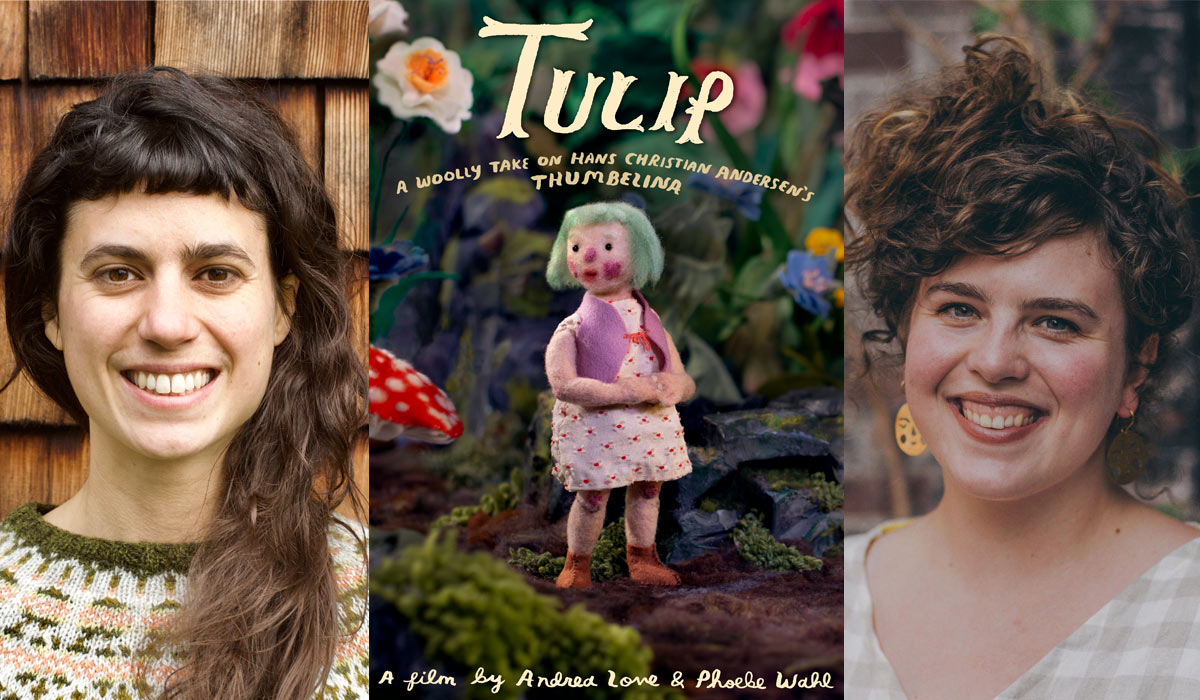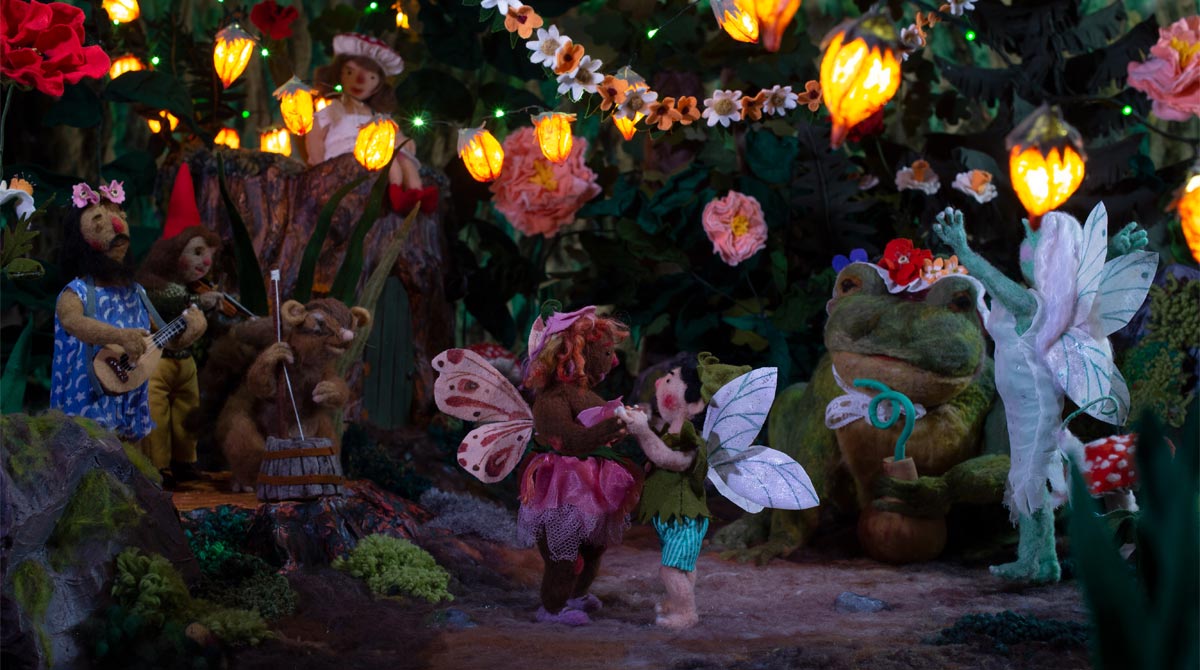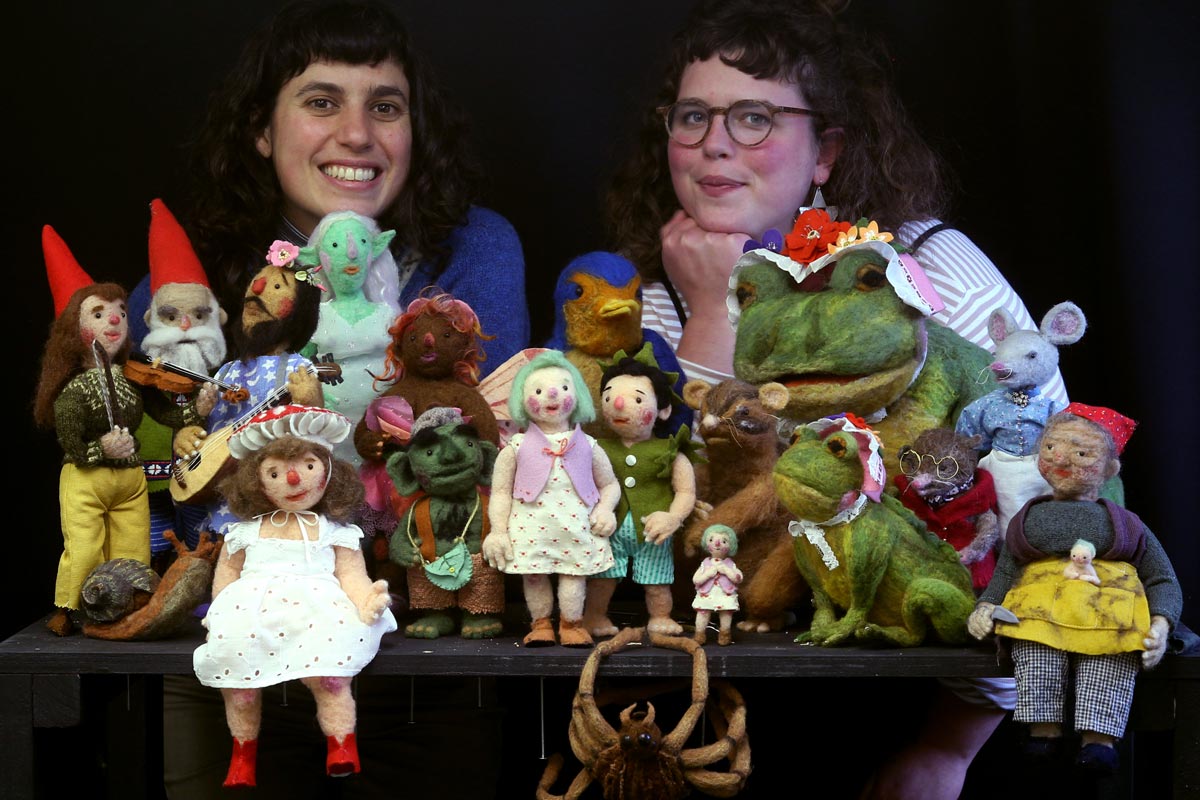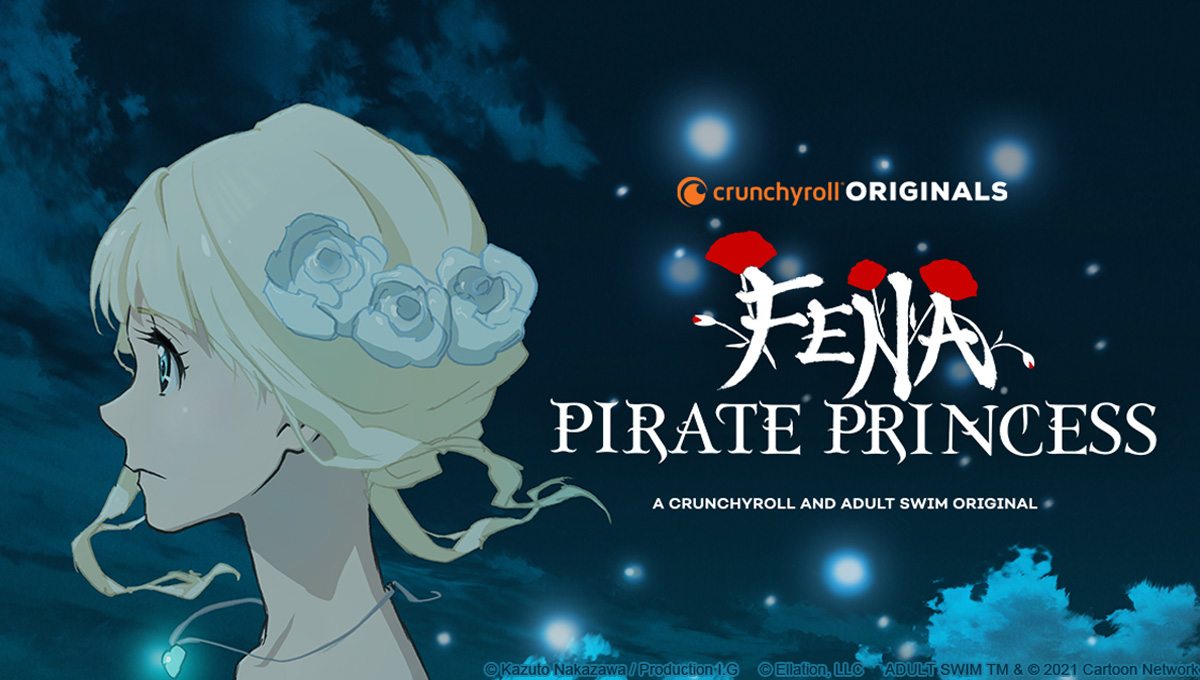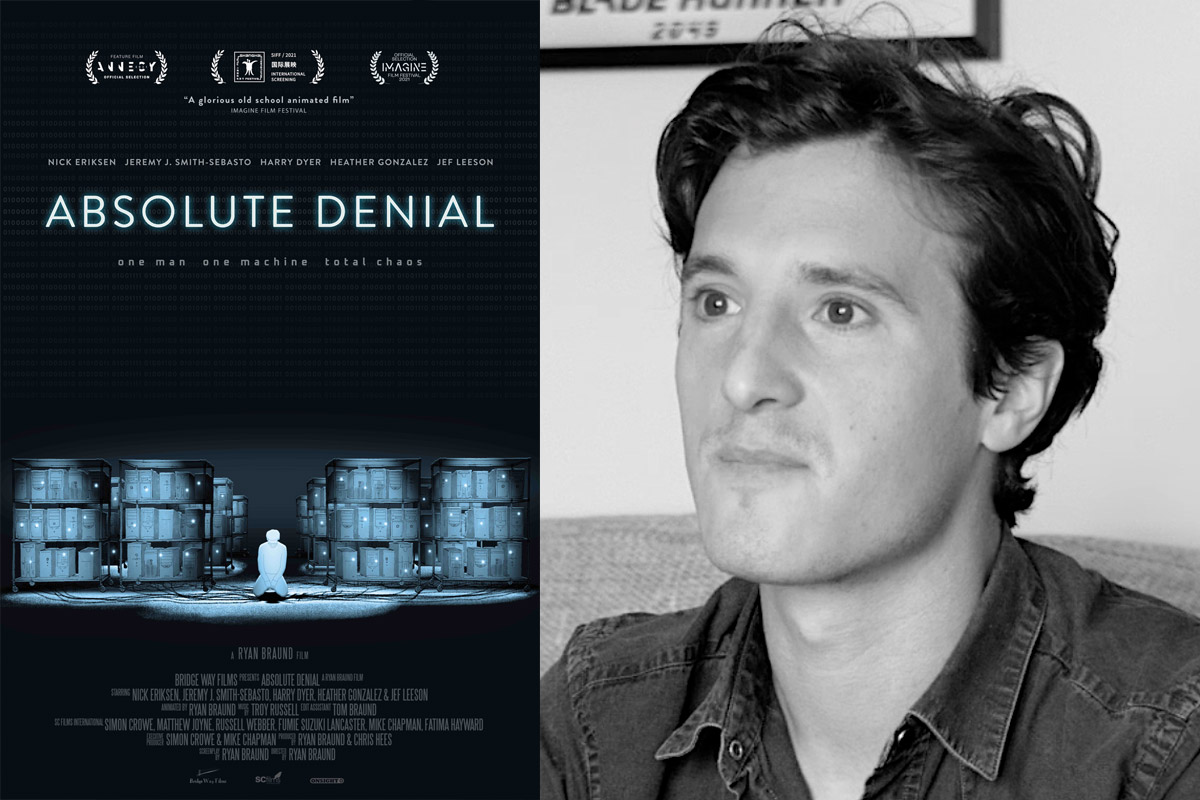Tulip
Synopsis
This contemporary adaptation of Thumbelina follows Tulip, a little girl who is born from a flower. An old woman finds the tiny child and welcomes her into her home. But she’s worried about letting Tulip go back outside—She is so small! What if she gets lost? Tulip is entranced by the world outside. One night, she decides to sneak out and explore…after all she could be back by morning! But things don’t go quite as planned. The garden is like a forest to tiny Tulip. In her quest to find her way back to where she belongs, Tulip meets many creatures, some kinder and more helpful than others… !
Film Credits
Directors, Artistic directors: Phoebe Wahl and Andrea Love
Scriptwriter: Phoebe Wahl (based on Thumbelina by Hans Christian Andersen)
Animation: Andrea Love
Music: Peter Michael Davison
Sound: Richard Gould
Production: Leah WARSHAWSKI (Inflatable Film), Andrea LOVE (A. LOVE PRODUCTION) and Phoebe Wahl
Techniques: Puppets / Original techniques
Target audience: Teens / Adults / Kids
Running time: 09 min 07 s
Tulip is a fantasy short film adaptation of Hans Christian Andersen’s Thumbelina. The beautiful animation in the film has a high degree of expressiveness with exceptional finesse, which is a result of the complete mastery of wool, the primary material of the puppets and sets, contributing to the film’s richness and delicacy. The film is nominated for “Young Audiences Short Films in Competition” at the Annecy International Animation Film Festival 2021 and had its international premiere.
We are happy to share the precious words from Phoebe Wahl and Andrea Love, the directors of the film, on the story behind the film, so you can watch the film with a deeper level of understanding.
Interview with Phoebe Wahl and Andrea Love
Hideki Nagaishi (HN): Why did you select Andersen’s classic tale Thumbelina as the basis for a film? And what message or experience do you want to deliver to the audience through the film?
Phoebe Wahl: I’ve always loved the story of Thumbelina and all of the incredible visuals within it. For years I’d been dreaming of ways to create my own version of it, and when Andrea and I began our collaboration and started brainstorming what we wanted to animate, Thumbelina immediately came to mind because of the lush imagery I felt that would be conducive to Andrea and I’s combined world. The mosses and leaves and flowers, and all the different animal characters leant themselves perfectly well to Andrea’s wool technique, and my visual aesthetic. Plus, there have always been parts of the story that have been so dark, as with many old fairy tales, and we thought it would be a fun opportunity to re-tell the classic story but shift many of the themes away from the marriageability of a child. I hope viewers come away inspired and transported by the magical world we created and reassured that it’s possible to ‘belong’ in more than one community at once. It always made me sad in the original Thumbelina that she married a prince at the end and never saw her mother again, we wanted Tulip to have a home with her mother as well as in the fairy world.
HN: How did the film project begin and how did you build the team?
Andrea Love: Phoebe and I connected through a mutual friend in 2019. We hit it off right away, and were really excited to work on a project together, though it took several months for our schedules to align, and for Tulip to emerge as the frontrunner. We started out by getting financial support from a couple of local producers, and then took the project to Kickstarter to raise the rest of the funds to finish the film. We publicized the project by sharing a lot of behind-the-scenes time-lapses of all the puppets we were making, as well as snippets of early animation. Phoebe and I both have sizeable social media followings, which helped us raise upwards of 60K through Kickstarter. Our team was very small, partly due to Covid, but also due to the small size of my home studio. We did most of the fabrication and animation work ourselves, and focused our resources on bringing in talented people to help with voice work and post production.
HN: What did you focus on and take care in when you wrote the story for the film?
Phoebe Wahl: When adapting the story and writing the script, I tried to focus on making Tulip (Thumbelina) a little more of an active participant in her own story, rather than a damsel-in-distress. She still encounters moments where she needs help, or is lost, but it was fun to give her a little bit more agency. For instance, she chooses to leave her mother’s house out of curiosity and excitement about the world outside, rather than being kidnapped. I also tried to develop the tertiary characters’ personalities and create a strong sense of love and attachment between Tulip and her mother, and a deep sense of acceptance and belonging within the fairy community too.
HN: Could you let us know the story behind the visual creation of characters and sets?
Phoebe Wahl: I tried to design everything in a way that felt both recognizable as my visual world, yet conducive to being brought into Andrea’s, through her animation style and methodology. I’m so happy with the way our styles seamlessly merged.
Andrea Love: I took Phoebe’s drawings and translated it into my 3D felted world. It was a very natural process, as her designs leant themselves so well to my style. We knew we wanted to feature wool and felt in any way we could, but we also incorporated sculpted foam, paper-mâché and some treasures from the antique store. Puppets were needle felted over wire and foam armatures. And the sets were constructed on rigid foam bases. It was important for us to keep all the effects in camera, because of budget but also as an aesthetic choice. We did not greenscreen anything; the only post production effect is wire removal. Because of special constraints, we ended up using 3 different scales. The majority of the film takes place in one scale, but we did end up having to make different versions of Tulip, the old woman and the frog to show both extreme wide shots and closeups. It was a ton of work, but so satisfying to see it all come together.
HN: Could you let us know the main reason why you chose felted wool as a material for your creation and how did you animate so delicately and elaborately, such as the old woman’s facial expressions and the water?
Andrea Love: I have been incorporating needle felting into my animation work for a decade, and it continues to bring me so much joy. I gravitate toward projects where I can work with wool, and people come to me expecting it. So, when a project comes my way, I’m usually thinking to myself, “Will this look good out of felt?” I knew Tulip was well suited to this style because a large portion of the film takes place in the natural world, which is always beautiful when created with wool.
I almost always have a felting needle in my hand when I’m animating, so that I can tug at the wool, poke at it and manipulate it in subtle ways. Wool has a way of keeping its shape, and balancing in unexpected ways. It works really well for particle effects like water and smoke, and can capture a surprising amount of detail. I think it’s a very exciting medium to work with, and it seems like audiences are catching on as well. I’ve seen a lot of beautiful work coming out recently using wool.
HN: Could you tell us about the story behind the music and sound of the film?
Andrea Love: We worked with a UK composer named Peter Michael Davison for the original soundtrack. I connected with him over Instagram a couple years ago, and I knew I wanted to collaborate with him after listening to his orchestral score for the stop-motion feature film Strike. He wrote a beautiful soundtrack for Tulip, and was able to do live recordings of the musicians, which compliments our handmade style very well. I had also connected with Richard Gould from Skywalker Sound over Instagram. He is a hobby needle felter, so had a connection to the craft, which was a great benefit. For me, this experience demonstrated the power of the Internet to connect to other creatives working in adjacent fields.
Phoebe Wahl: I wanted the music in Tulip to reference some of my favourite classic stop-motion animations through our music, to give it an old-fashioned feel. I love the scores of animations like Hedgehog in the Fog, the original Moomins stop-motion, and the Claymation Frog & Toad. We used all of those intro themes as inspiration for Tulip’s music, which our composer Peter did such an incredible job creating.


